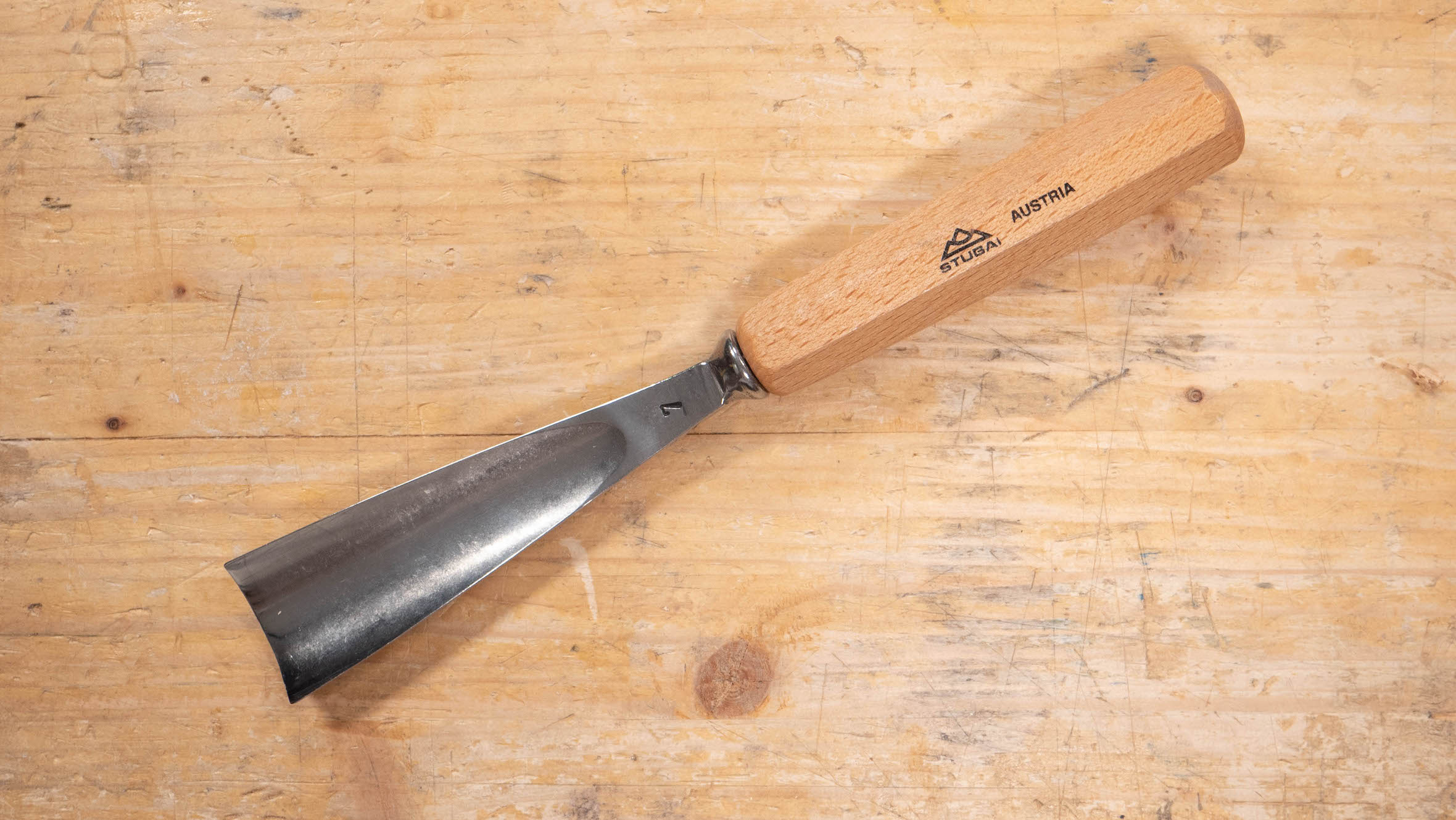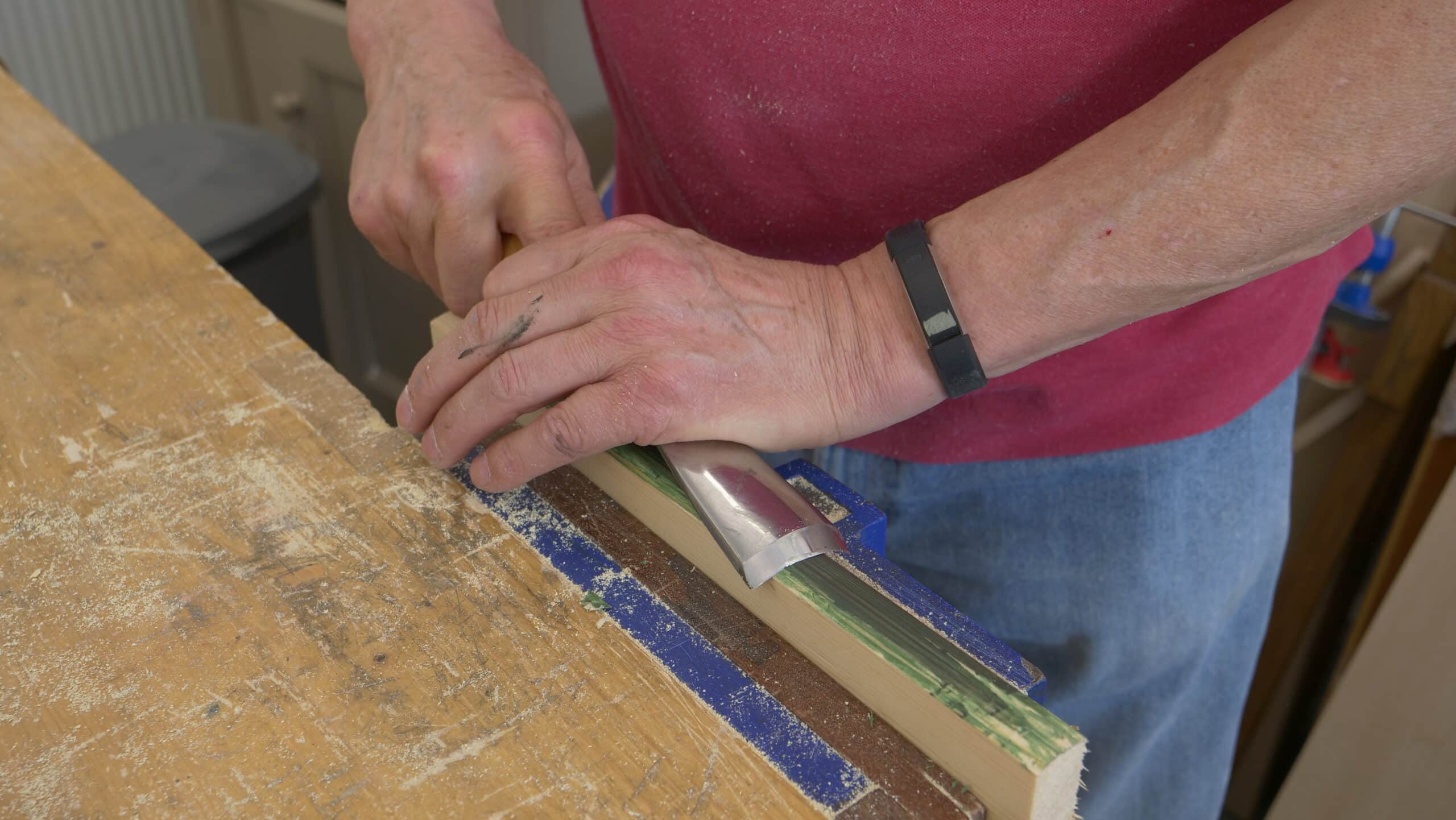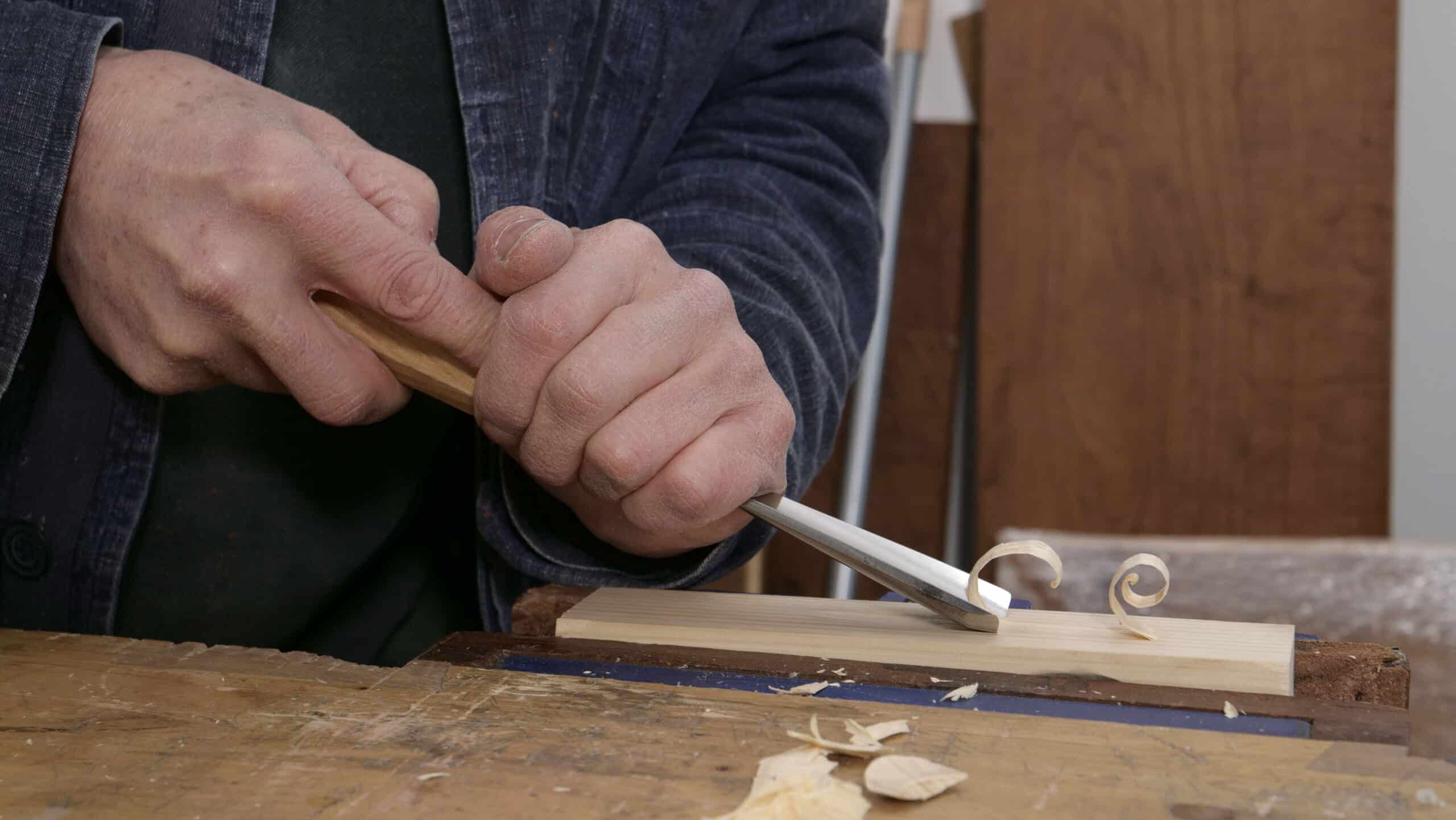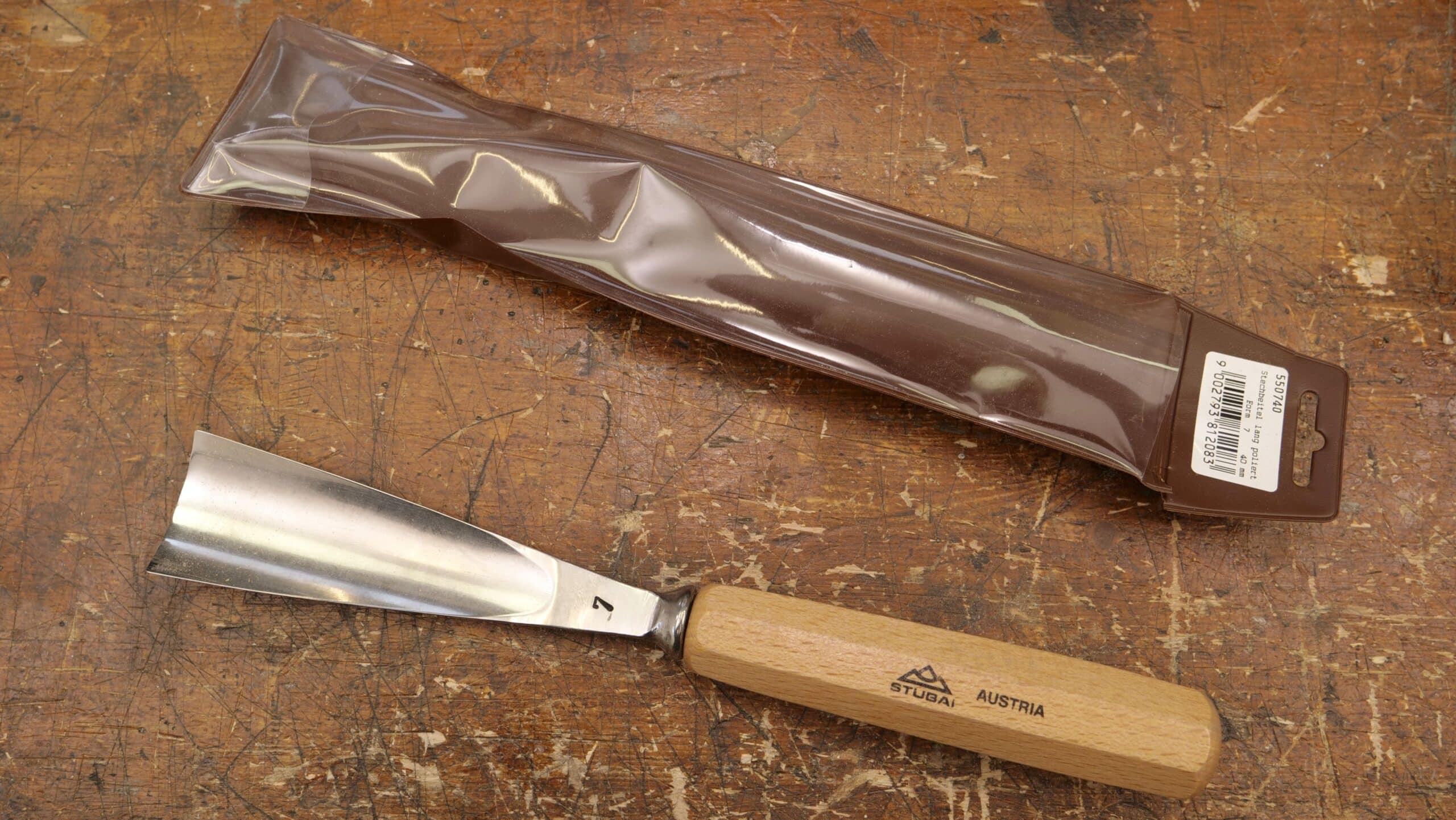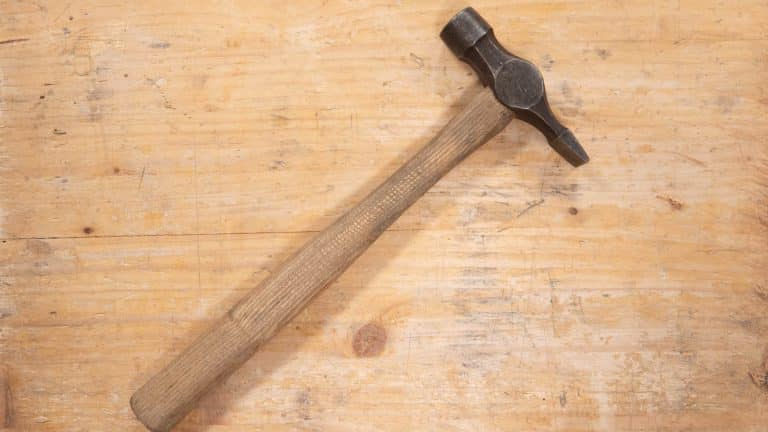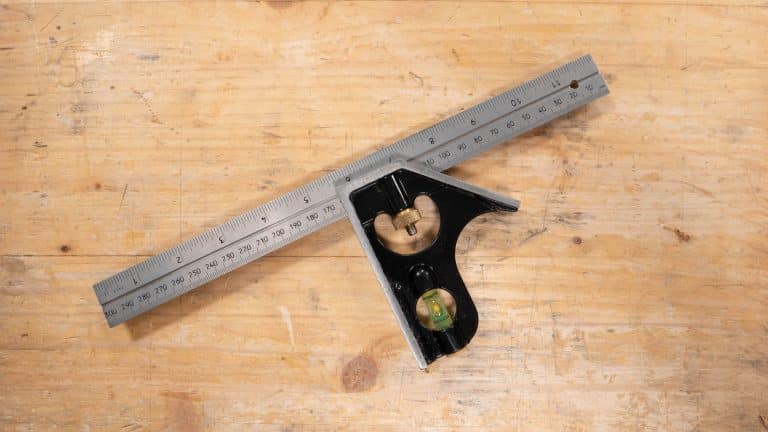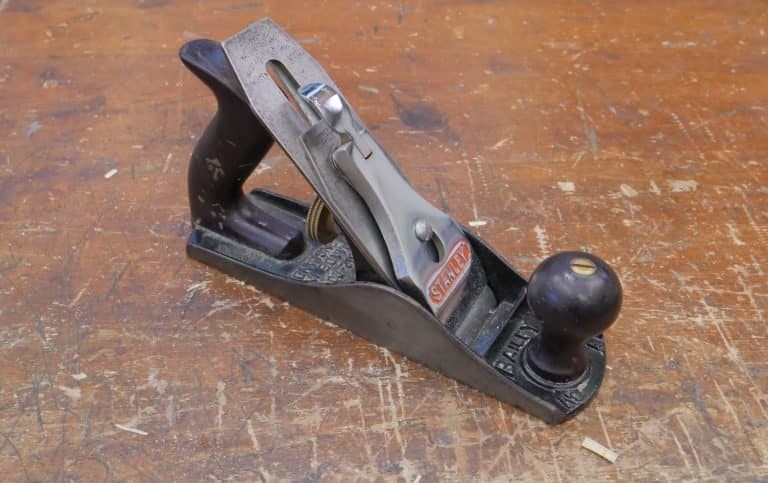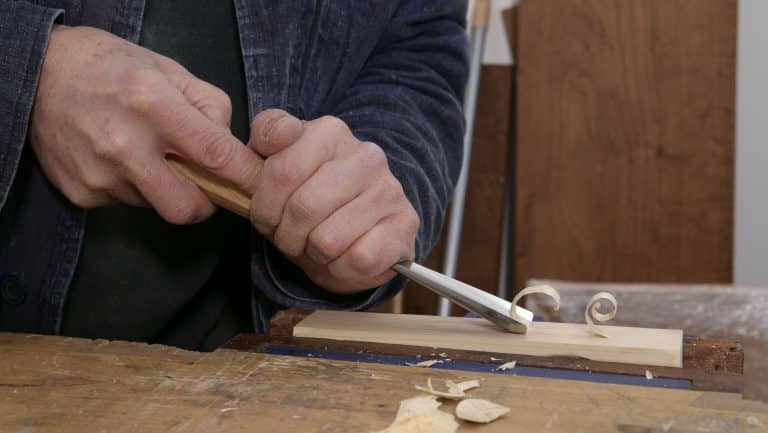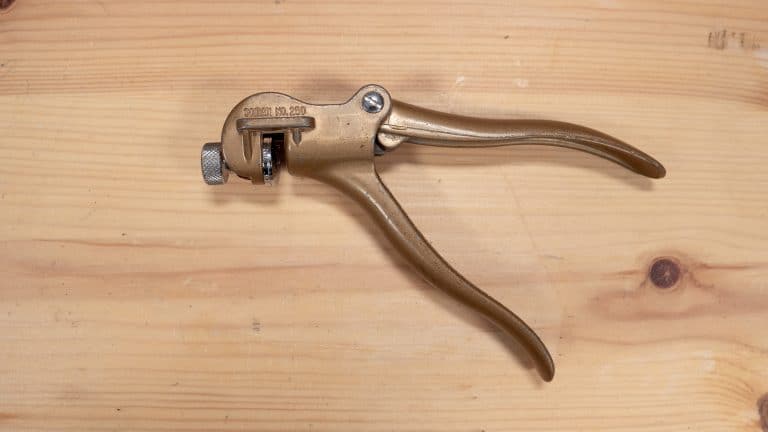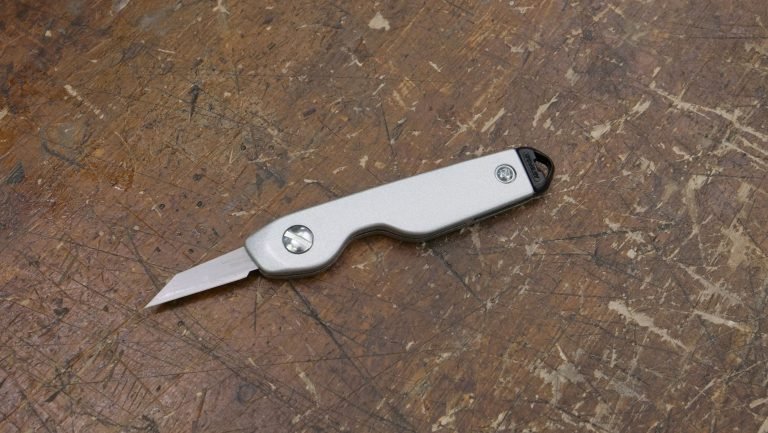The Gouge Guide
A gouge is similar to a chisel in the way that it looks as it has a handle and a metal blade, however the blade is rounded which is mainly used for carving.

Uses
The gouge is used for carving, shaping, hollowing out and curved cuts. They often will be used within fine woodworking for both decorative and functional tasks. To read more about using a gouge click here.
Terminology
- Out-cannel- Bevel on the outside
- In-cannel- Bevel on the inside
Types
There are many different types of gouges but they are all used for a type of carving. The main differences between them is some are out-cannel and some are in-cannel. They are measured by their width too which can range from 1/16” (1.5mm) to 2” (50mm). They each have a sweep number which determines the size of the radii, No1 is almost straight whereas No11 is semi-circular. They can have round, oval or octagonal handles. All these different aspects means that there are hundreds of different gouges. To read more about buying a gouge, click here.
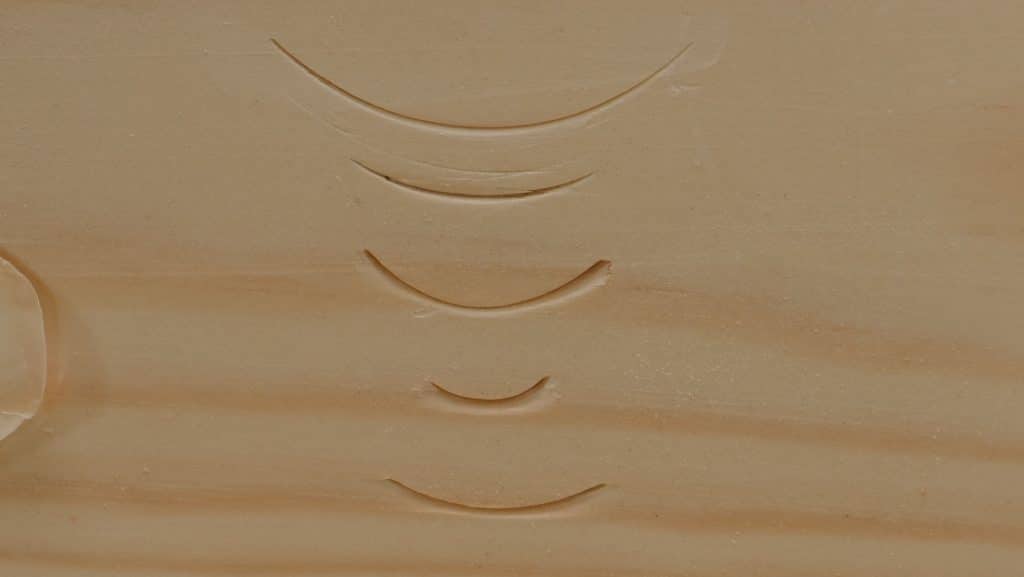
Parts of a Gouge
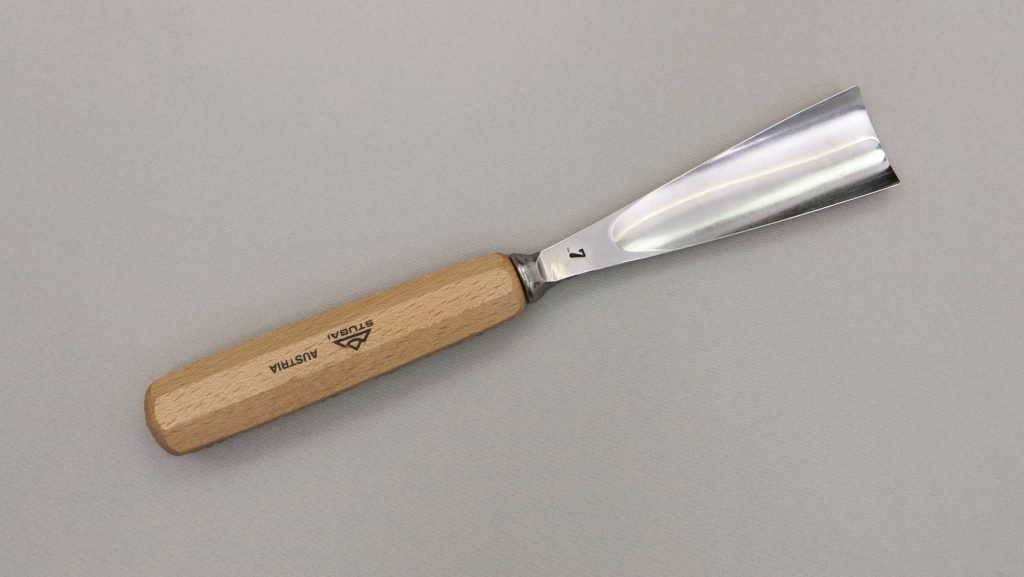
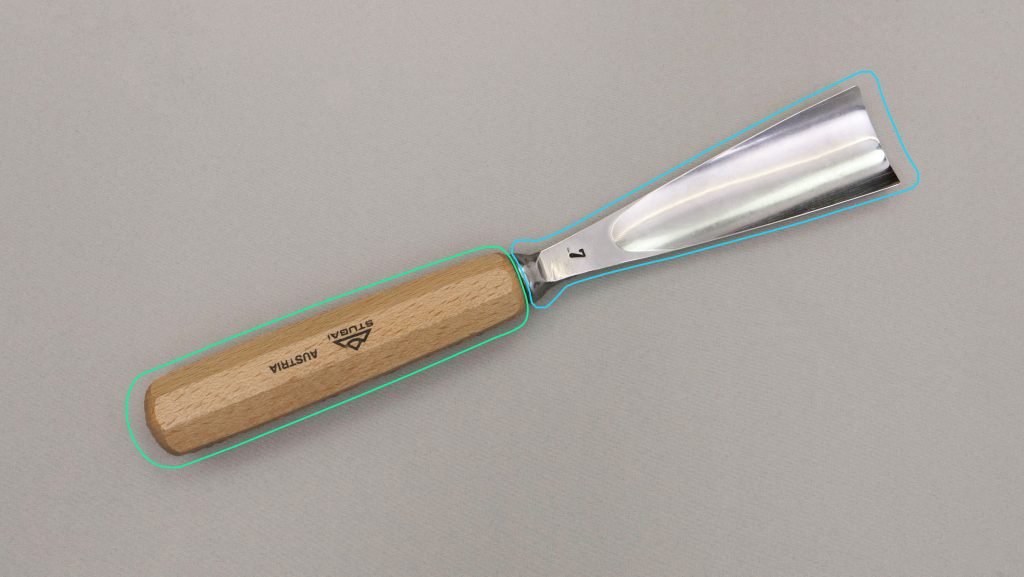
● Blade
● Handle
Relevant Guides
-
Sharpening a Gouge
Note: This is the sharpening process of an out-cannel gouge. Paul recommends 2 methods to sharpen an out-cannel gouge which can both be done on diamond plates or abrasive paper. You will also need a curved strop, which you can make yourself, to polish at the end of the sharpening process, for this you will…
-
Using a Gouge
You can drive the gouge into the wood using a chisel hammer or mallet or use hand and arm pressure only. You can use them to pare cut, depending on the gouge type. The gouge can make shallow or deep cuts depending on the pressure applied, if you are using it to hollow, you would…
Further Reading
To read more on this we recommend the following from Paul’s blog:
Found A Professional Gouge That Won’t Gouge You
Ashley Iles Can’t Keep Stock Levels For #7- 36mm Gouge
Spoons With Gouge, AX, Knife Or Lathe
Spoon Making- Carving Out The Bowl

